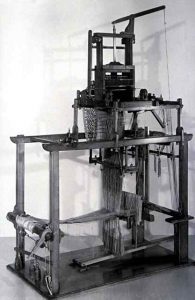Still this winter, Jacquard sweater has not finished surprising us by the infinite variety of its patterns and colors. Many large brands offer their interpretation of that shirt to geometrical and varied patterns, full of history and whose success far beyond our borders.
Jacquard sweater fits this season in the mountain-chic trend where there is no need to have cold to be beautiful: great patterns are knitted in a more or less thick mesh that keeps us warm. On recent catwalks, we saw sweaters with patterns, combined a graphic garment at the bottom, at Miu Miu for example on the photos below.
Not surprising that the most prestigious couture brands do business with Jacquard sweaters. Until the 18th century, this sweater was very popular by the famous people, perhaps because years ago King Eric XIV present it to his Swedish people This pattern on a pair of socks knitted in silk, from England, that he paid the equivalent of the annual salary of a valet. The most beautiful sweaters found in the seventeenth and eighteenth centuries come from the Scandinavian countries which took over and made a juicy trade.
The success of the Jacquard sweater is an international phenomenon that come from several centuries. Each continent create differents forms and colors. The Nordic achievements are in shades of brown, beige, red, white, close to the natural color of the wool of their sheep, while the sweaters in the Middle East using all the colors that nature gave them (the Greens of grinding of the shrubs, the yellow of Saffron).
And this Jacquard pattern was not reserved for the sweaters: gloves, hats, socks…
Origin of the Jacquard pullover
The origin that still inspires high-fashion designers is unclear. In France, in any case, we know that the Jacquard name comes from the inventor Joseph-Marie Jacquard (1752-1834), who developed a technology to automatically raise the threads of string on the looms, thus avoiding this work to children. This innovation on the looms, then called “Jacquard Looms”, has not been charged with a good eye and contributed to the revolt of the Canuts, in Lyon, in 1831, in which workers from the textile industry rose against the liberalization of the economy in a context of industrial revolution.
In a few words, the genius of J.M. Jacquard was to integrate punch cards in looms to guide the hooks which raise the warp threads. In this way, it was possible to automate the manipulations and so multiply them. It’s as well as more complex patterns, like the specific jacquard sweaters geometric graphics were able to see the day.








